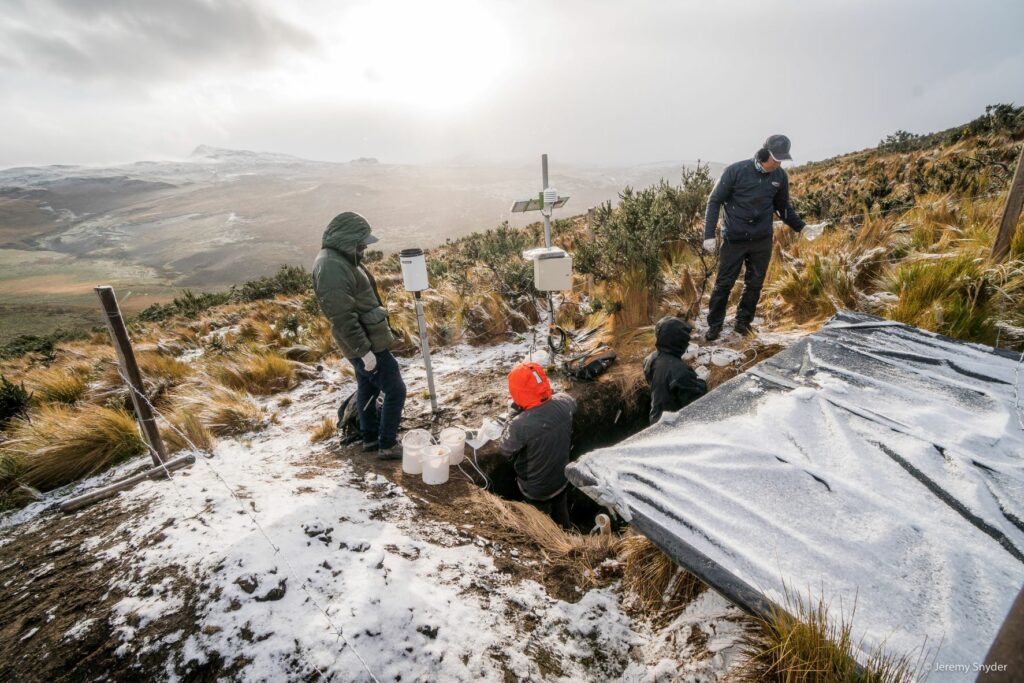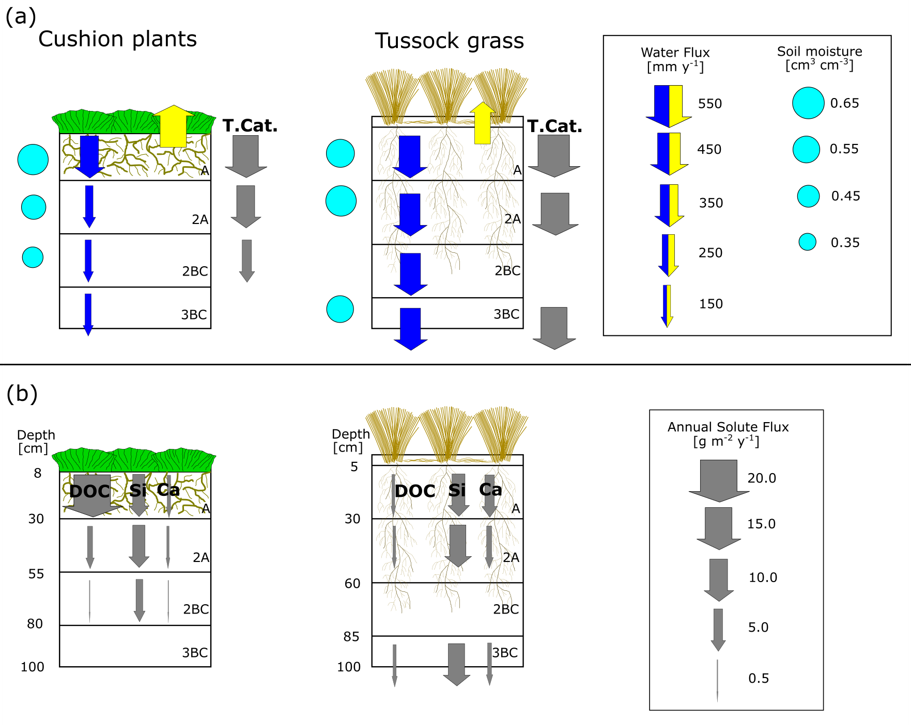PhD Defense, 01/12/2022. UCLouvain.
A major concern for sustainable development in the Tropical Andes is the growing imbalance between ecosystem service supply and demand, particularly with regard to freshwater ecosystem services. While the capacity of the Tropical Andes to provide freshwater ecosystem goods and services is already under pressure, the demand is rapidly increasing as a result of demographic growth, urbanization and evolving socio-economic conditions. Coupled with future projections of climate change, urban growth and continued socio-economic development, these environmental questions surrounding sustainable development in the Ecuadorian Andes call for urgent action.
This thesis contributed with evidence-based research on conservation and restoration of young volcanic ash soils through an analysis of soil-water-plant interactions at the pedon, toposequence and landscape scale. The empirical data were collected over a 5-year period in the Jatunhuaycu experimental station, located in the northern Ecuadorian Andes at 4200 m a.s.l. The monitoring programme was specifically designed to test for potential differences in soil hydrophysical and biogeochemical properties and their changes over time between topographic positions and vegetation types.

At the soil pedon scale, the soil water balance was different between soils covered by tussock grasses and cushion-forming plants. The vegetation type had a measurable effect on the solute concentrations and fluxes in the uppermost horizon, while this effect strongly decreased with depth. The higher water infiltration rates of soils under tussock grasses resulted in higher chemical weathering rates than in soils under under cushion-forming plants.
At the toposequence scale, the soil pore structure and hydraulic properties of the A horizon varied by vegetation type across the studied profiles, while the studied topographic positions did not show a significant effect. The higher soil moisture content at higher matric potentials and total available water under cushion-forming plants can enhance soil water storage in the topsoil during prolonged rainfall events. However, its strong decrease in saturated hydraulic conductivity with depth can promote subsurface lateral flow during large rainfall events.
The connectivity of the geomorphic units at the landscape scale is time-dependent: storm runoff was observed at the outlet of the catchment when the moisture content in the upper horizons of the hillslope profiles reached field capacity. The geochemical signature of the solute export strongly varied over time, as a result of changes in the hydrological connectivity of geomorphic units.

The existence of strong interlinkages between plant functional types, soil and surface hydrology, and nutrient export has important implications for sustainable management of high Andean ecosystems. The results of this thesis can contribute to assess the potential impacts of vegetation conservation and restoration programmes on water resources in the Tropical Andes.
More information:
Páez-Bimos, S., Molina, A., Calispa, M., Delmelle, P., Lahuatte, B., Villacís, M., Muñoz, T., and Vanacker, V.: Soil-vegetation-water interactions controlling solute flow and transport in volcanic ash soils of the high Andes, Hydrol. Earth Syst. Sci. Discuss. [preprint], https://doi.org/10.5194/hess-2022-294, in review, 2022.
Páez-Bimos, S., Villacís, M., Morales, O., Calispa, M., Molina, A., Salgado, S., de Bievre, B., Delmelle, P., Muñoz, T., & Vanacker, V. (2022). Vegetation effects on soil pore structure and hydraulic properties in volcanic ash soils of the high Andes. Hydrological Processes, 36( 9), e14678. https://doi.org/10.1002/hyp.14678
